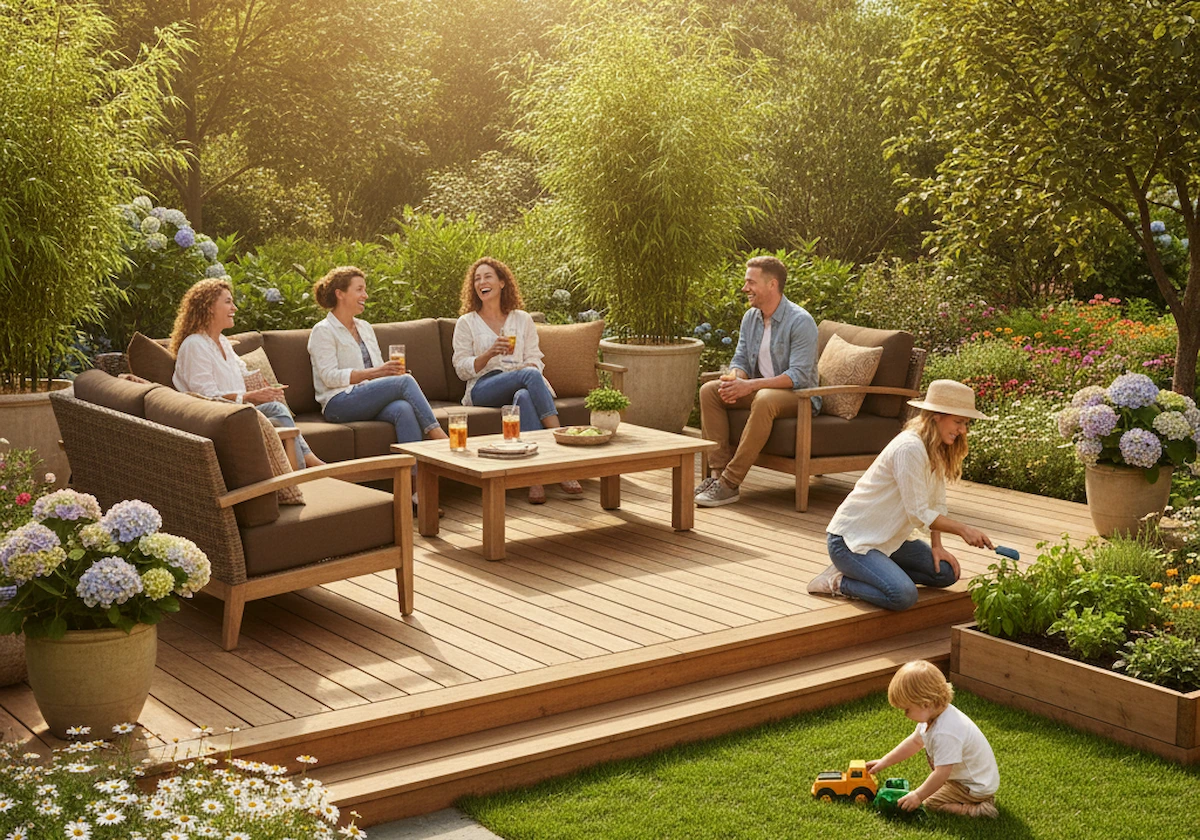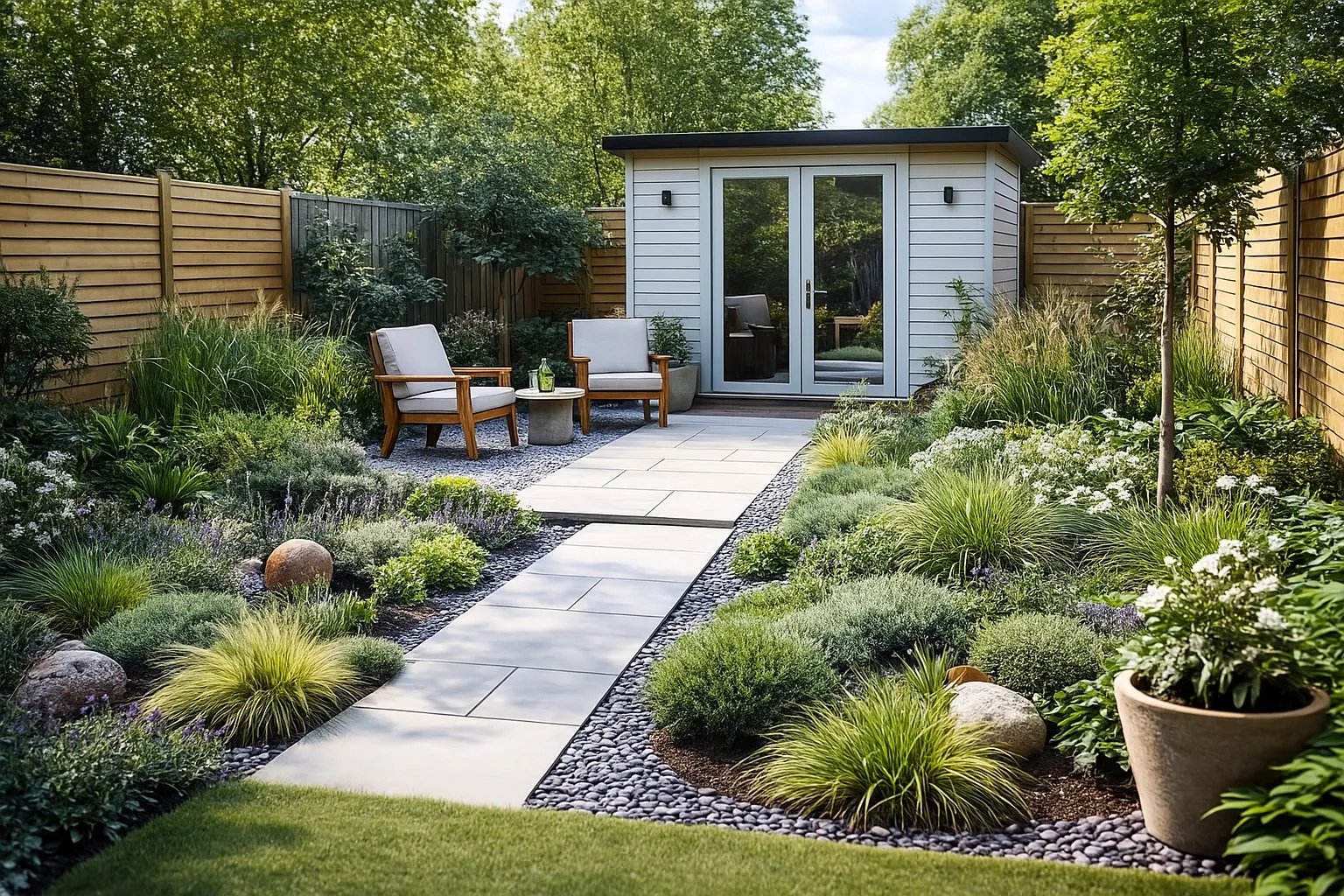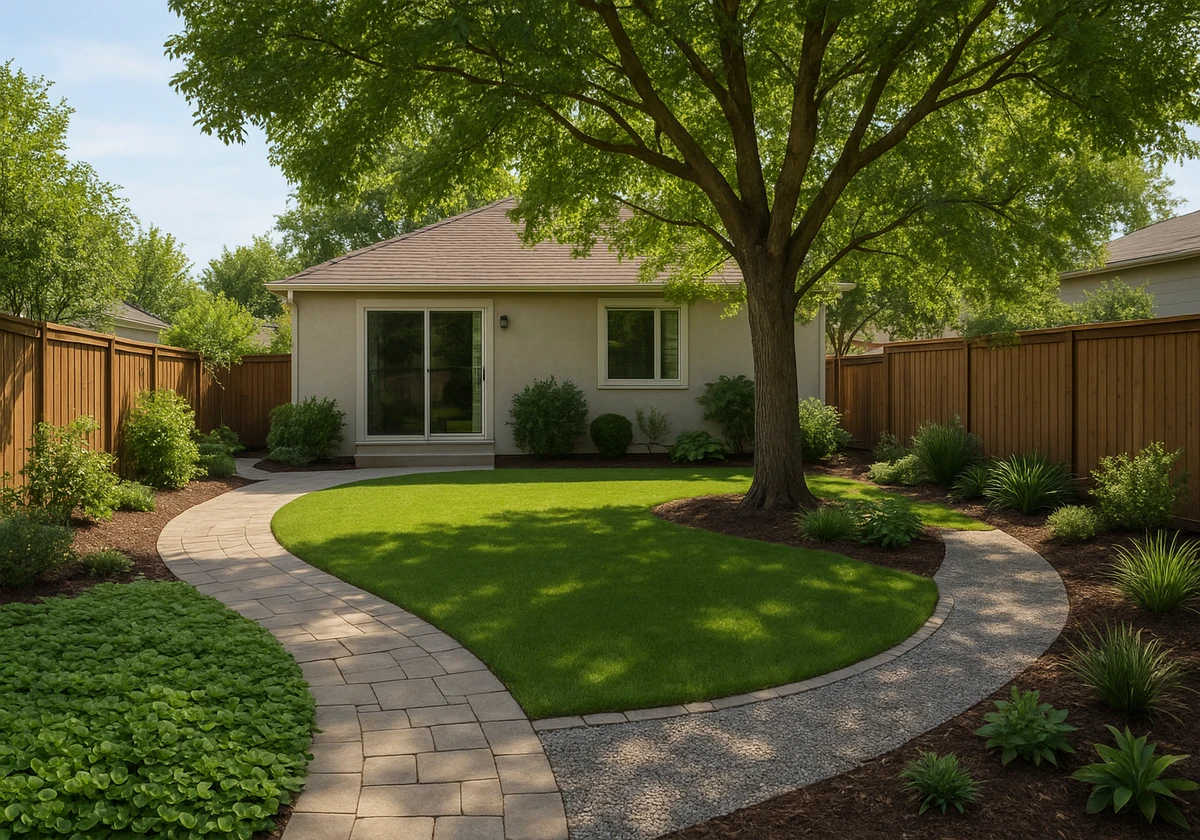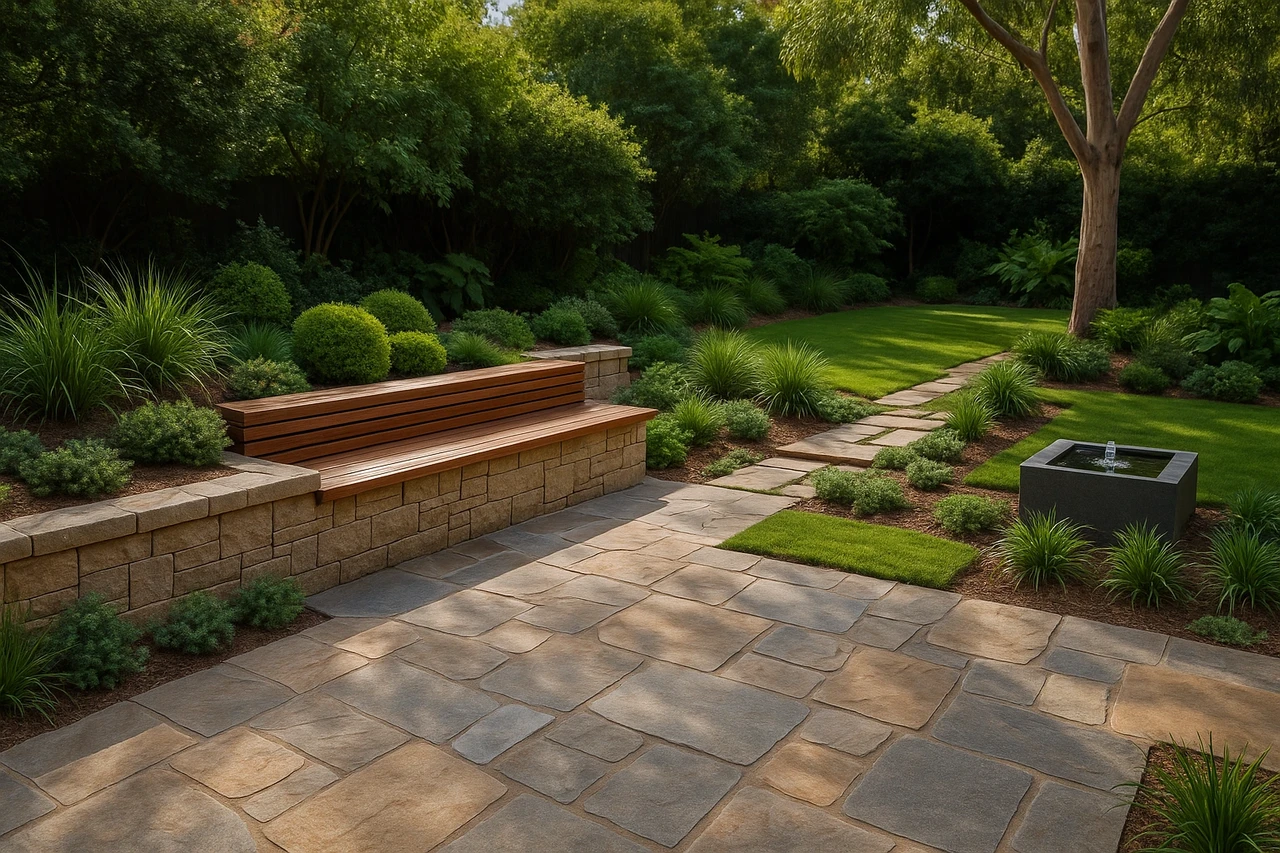Trying to ensure sustainable gardening can feel like too much, too soon. It’s easy to feel lost in all the gardening advice out there. Too many tools, too many trends, and not enough clarity about what actually works.
Plenty of gardeners want to reduce waste and create a healthier environment but get stuck in a cycle of confusing advice and costly ideas. It’s frustrating when all you want is a space that’s easy to manage and good for the planet.
This guide walks you through simple ways to make your yard more sustainable. You’ll learn how to improve your soil, grow with native plants, conserve water, support wildlife, and spend less doing it. These are changes you can start right away in your own garden. No landscaping degree needed.
Ready to grow greener with less guesswork? Let’s get into it.
What Is Sustainable Gardening?
Sustainable gardening means growing and maintaining your garden in a way that supports the environment rather than harming it.
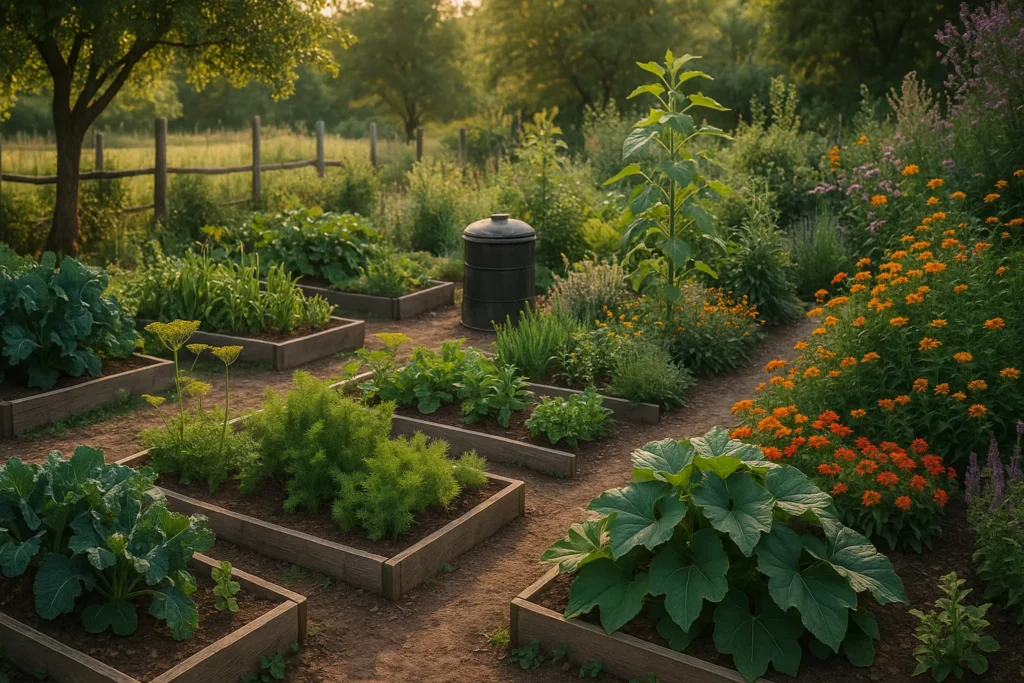
You make choices that reduce chemicals, conserve water, improve soil, and help your garden plants thrive naturally. These small changes lower your impact, save resources, and turn your space into something that benefits both you and nature.
Here’s what that can look like:
- Building soil using organic materials like compost, grass clippings, and yard waste instead of synthetic fertiliser (This helps retain soil moisture and reduce runoff).
- Planting native plants that grow well in your climate, attract beneficial insects, and naturally resist pests (Healthy soil and smart plant choices work hand-in-hand to reduce the need for intervention).
- Managing water use with drip irrigation, soaker hoses, or even a small rain garden.
Tip: Try converting a small patch of your lawn into a space for flowering natives. You’ll use less water, attract other pollinators, and have less work to do during the growing season.
When your garden works with nature, not against it, you’ll see better results with less effort.
Build Better Soil Naturally
Most garden problems start below the surface. If your soil isn’t right, your plants won’t thrive. It doesn’t matter how much water or fertiliser you add.
Healthy soil anchors your plants, holds nutrients, helps regulate moisture, and cuts down how often you need to water or add fertiliser. When you build it the natural way, your garden beds become more productive and easier to manage.
Here’s how to start:
- Add a compost pile to break down yard waste, kitchen scraps, and grass clippings into rich, dark organic matter (This not only feeds your plants, but also attracts earthworms and microbes that keep your soil alive)
- Cover your soil with organic mulch like bark chips or straw to suppress weeds, retain water, and regulate temperature (These layers protect roots while feeding your garden over time)
- Plant green manure crops or cover unused areas with fallen leaves or low-growing native ground covers
Tip: You don’t need to dig deep. Simply spreading compost over your soil and letting worms do the work is often enough to see a big improvement (I know…it sounds too easy, but it works).
Once your soil is healthy, it’s time to look at plant choices. In the next section, we’ll explore how native plants can simplify your garden and support your local ecosystem.
Choose Native Plants That Do the Work for You
If you’ve fixed your soil, the smartest next step is choosing plants that can thrive in it with minimal help. That’s exactly what native species offer.
Because they’ve evolved in your environment, native plants tend to need less water, resist local plant diseases, and attract beneficial insects like bees and ladybirds. They also create a more stable habitat for birds and other wildlife.
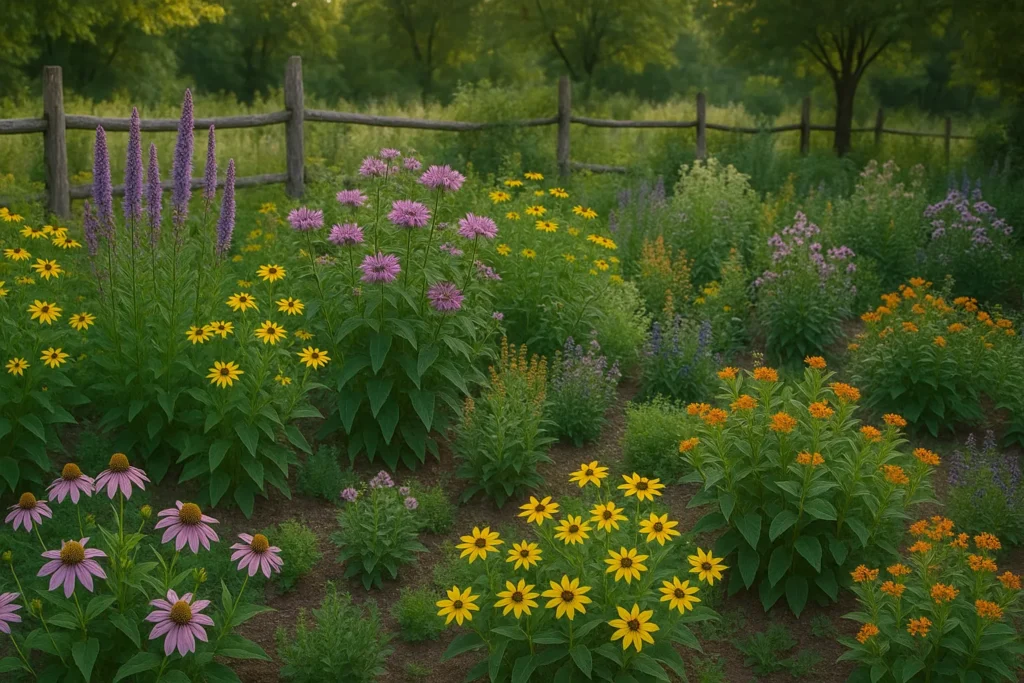
Native plants reduce the need for fertilisers and pest control
They’re already built to survive your local climate. That means they’re less likely to attract pests and more likely to fight off disease naturally. You won’t need to rely on harsh sprays or constant feeding.
They help you save water without sacrificing growth
Most natives are drought-tolerant and require less watering, which means you’ll conserve water during dry spells. This extends the benefits of your healthy soil from below to above the ground.
They support your garden’s natural balance
By filling space with local species, you reduce the chance of invasive species taking over and help maintain genetic diversity in your local ecosystem.
Tip: Try adding just one native cluster. A patch of kangaroo paw, lilly pilly, or grevillea can thrive with almost no help.
If you’re designing a layout around native plants, this guide to transforming your outdoor space has great visual ideas that stay grounded in sustainable landscaping principles.
Next, we’ll explore how to keep your plants hydrated without overwatering or increasing your bills.
Water Smarter Without Wasting a Drop
Most new gardeners use far more water than they need. If you’ve just started gardening, chances are you’ve stood there with the hose, soaking everything in sight. (We’ve all done it.) Overwatering leads to runoff, root rot, and higher bills. It doesn’t help your plants grow stronger either.

Watering more efficiently starts with timing and technique. You don’t need a high-tech setup to make a big difference. A few smart adjustments can go a long way.
Drip irrigation delivers water exactly where it’s needed
Drip systems and soaker hoses apply moisture slowly at the root level. This keeps soil moisture consistent and avoids waste. It also helps your plants stay healthier because you’re not soaking leaves or encouraging fungal issues.
Use mulch and ground cover to hold in moisture
Spreading organic mulch across your garden beds reduces evaporation, regulates temperature, and suppresses weeds. It also makes the water you do use go much further.
Simple timing changes can reduce water use by half
Water early in the morning or late in the afternoon to avoid evaporation. Just shifting your schedule by a couple of hours can make a big difference in how efficiently your garden uses water.
Tip: You can set up a basic drip irrigation system in an afternoon using parts from your local hardware store. Or try a DIY version using repurposed plastic bottles with small holes.
Water is a limited resource. Next, let’s look at how to support wildlife and pollinators so your garden stays lively and productive all season long.
Make Space for Pollinators and Helpful Wildlife
One in three bites of food you eat depends on a pollinator. Yet most backyards are too tidy, too sprayed, or too quiet to support them.
Bees, butterflies, native beetles, and even small birds all play important roles in your garden. They spread pollen between flowers, help increase plant yields, and support a more diverse, self-sustaining environment.
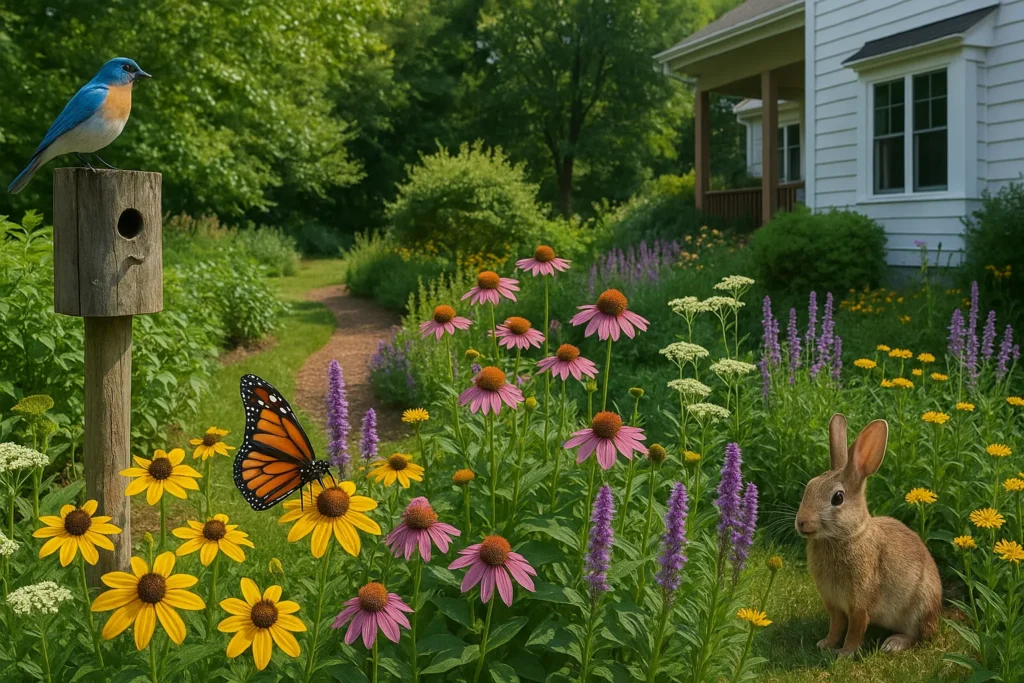
If your space looks beautiful but lacks movement, it may not be inviting to pollinators. (I’ve walked through brand-new gardens that looked flawless but grew next to nothing because no insects visited.)
The good news is, you can fix that with a few easy changes. Skip chemical sprays and try companion planting to manage pests instead. Leave a corner of your yard slightly unkept. A patch of exposed soil or a few stacked branches can create much-needed habitat. These small spaces offer shelter that’s missing in polished landscapes.
Nectar-rich native plants such as grevillea, bottlebrush, and tea tree bring life back into your garden during the growing season. If you can, set out a shallow dish filled with rainwater and pebbles. It’s a reliable water source that won’t drown small insects.
Tip: If spraying is absolutely necessary, do it well after sunset when pollinators are inactive. It’s a small habit that makes a meaningful impact.
Once pollinators feel at home, your garden becomes more productive and far easier to maintain.
Next, we’ll look at how planting trees can help your space thrive season after season with structure, shade, and lasting support.
Plant Trees with Purpose
Urban greening projects can reduce heat, improve air quality, and support biodiversity, according to Greening Australia. Trees aren’t just nice to have. They play an important role in how comfortable, functional, and sustainable your garden becomes over time.
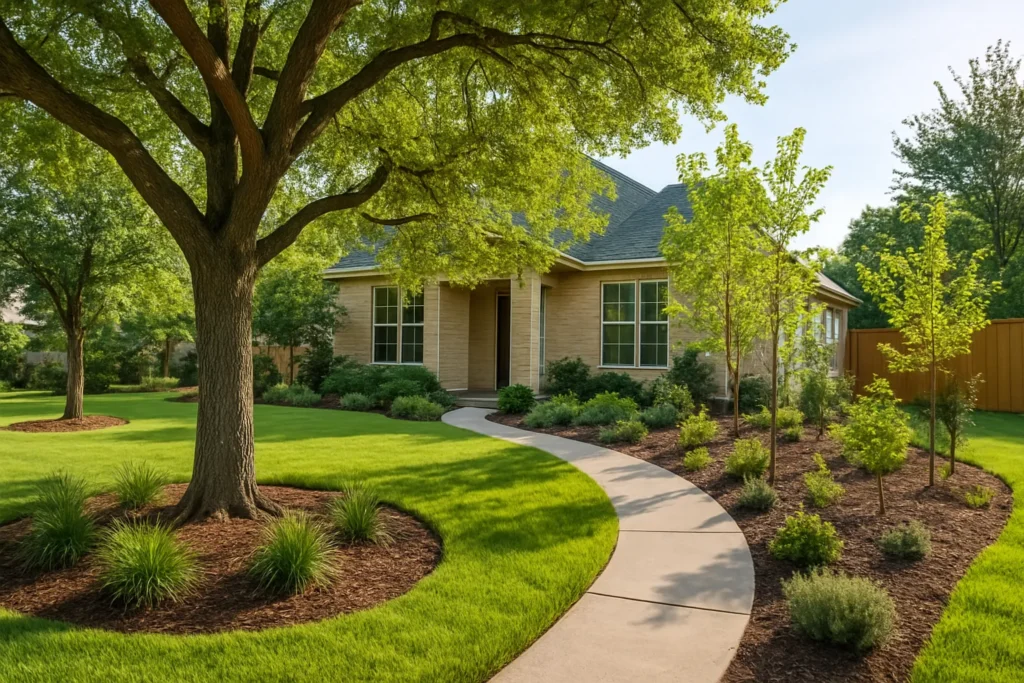
Here’s how trees support your garden:
- They create shade that cools your lawn, protects vulnerable garden plants, and helps retain soil moisture
- Their roots improve soil structure, prevent erosion, and reduce nutrient loss
- They provide natural shelter and food for birds, bees, and other helpful wildlife
When you’re choosing which trees to plant:
- Look for deciduous trees if you want cooling in summer and sunlight in winter
- Consider hardy natives like lemon-scented gum, brush box, or Queensland maple
- Make sure you leave enough room between trees and buildings for safe root and canopy growth
Tip: After planting, mulch around the base with organic materials but avoid piling lawn clippings against the trunk. Water deeply during the first two years to establish strong, deep roots.
Trees can shape your entire garden experience. They give you privacy, cooling, and a more dynamic outdoor space that continues to improve with age.
Next, we’ll talk about when it makes sense to manage landscaping yourself and when it’s worth hiring a professional.
Know When to DIY and When to Get Help
Not every landscaping task belongs on your weekend to-do list. There’s a difference between planting a new bed and rebuilding a retaining wall. And if you’ve ever spent an entire Saturday fixing something that still didn’t work right, you know exactly what I mean.
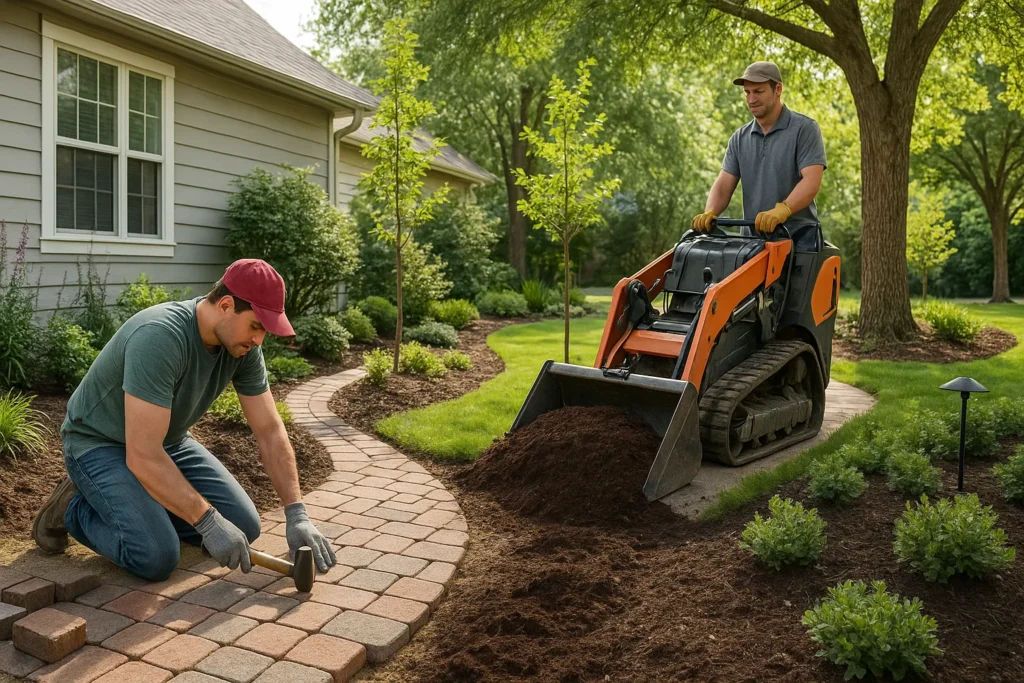
DIY can be rewarding. Building a compost pile, laying organic mulch, or planting native shrubs are all manageable jobs for most people. They help you save money and learn what works in your own garden.
But there are times when calling in a professional makes more sense. If you’re reshaping your yard, adding drainage, or selecting trees near structures, it helps to get input from someone with experience. A qualified landscaper can save you time, prevent costly mistakes, and deliver results that last.
Tip: If the mistake would be expensive or hard to fix later, it’s worth asking an expert before you begin.
This guide on how to hire the right landscaping company outlines what to ask, how to compare quotes, and how to choose someone who respects both your vision and your budget.
In the next section, we’ll pull everything together into a clear, practical approach that works for your space, your time, and your goals.
Pull It All Together With a Garden That Works for You
You don’t need to redesign your entire yard to make a difference. One compost pile, one native planting, or one watering change can shift your garden toward something more sustainable and rewarding.
If you’ve read this far, you now have a clear picture of how sustainable gardening works. Healthy soil. Smarter water use. Local plants that support pollinators and resist pests. Trees that cool and frame your space. All of it adds up.
Most of these steps cost less than people expect. And many can be tackled gradually using leftover yard waste, repurposed materials, and a bit of weekly care. If saving money is top of mind, here’s a list of low-cost outdoor DIY ideas that can help you start small and grow from there.
Tip: Don’t wait until everything feels perfect. Pick one thing this week. Maybe it’s skipping the chemical spray, planting something native, or adding a shallow water dish for bees.
The best gardens don’t just look good. They feel good to care for. They give back. And they reflect the people who grow them.




